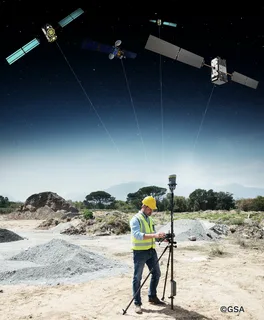As the automotive industry rapidly shifts towards autonomy, the need for precise, reliable, and real-time positioning has never been more crucial. The future of gnss technology in autonomous vehicles promises to reshape how cars navigate the world, ensuring safety, efficiency, and seamless integration into intelligent transportation systems.
Understanding GNSS and Its Role in Autonomy
Global Navigation Satellite Systems (GNSS), such as GPS, Galileo, and GLONASS, provide geolocation and time information to a receiver on or near the Earth’s surface. In autonomous vehicles, GNSS is fundamental for:
- Determining accurate vehicle location
- Assisting in route planning
- Enabling advanced driver-assistance systems (ADAS)
However, standalone GNSS faces challenges like signal obstruction in urban environments, multipath errors, and vulnerability to interference. This has led to the development of enhanced GNSS technologies tailored for autonomy.
Enhanced GNSS: RTK and PPP
To meet the stringent demands of autonomous navigation, GNSS is being augmented by technologies like:
- Real-Time Kinematic (RTK): Provides centimeter-level accuracy by using a fixed base station and correcting GNSS signals in real time.
- Precise Point Positioning (PPP): Delivers high accuracy globally without the need for a local base station.
These techniques are increasingly integrated with other sensors like LiDAR, IMUs (Inertial Measurement Units), and cameras to create robust sensor fusion systems.
Integration with AI and Sensor Fusion
The future of GNSS technology in autonomous vehicles lies in its synergy with AI-driven sensor fusion. By combining GNSS data with inputs from radar, LiDAR, and cameras, autonomous systems can achieve more reliable localization and environment perception, even in GPS-denied areas such as tunnels or parking garages.
This integration enhances:
- Lane-level positioning
- Obstacle detection
- Decision-making capabilities in real time
Addressing Challenges and Ensuring Security
For GNSS to be a reliable backbone of autonomous driving, several challenges must be addressed:
- Signal Interference and Spoofing: Cybersecurity measures are being developed to detect and mitigate GNSS spoofing attacks.
- Urban Canyons: Advanced algorithms and multi-frequency GNSS receivers help maintain accuracy in dense urban areas.
- Global Coverage and Availability: Next-generation satellite constellations promise improved signal quality and availability worldwide.
Future Outlook and Industry Adoption
With companies like Tesla, Waymo, and BMW investing in GNSS-enhanced autonomous platforms, the future of GNSS technology in autonomous vehicles looks promising. GNSS will not work in isolation but as part of an intelligent, interconnected navigation ecosystem.
We can expect:
- Increased adoption of dual- or multi-frequency GNSS receivers
- Widespread use of RTK networks in urban areas
- Standardization and regulatory support for high-accuracy positioning
Conclusion
The future of GNSS technology in autonomous vehicles is pivotal to achieving full autonomy. As advancements in precision, reliability, and integration continue, GNSS will remain a cornerstone in the evolution of self-driving cars. With ongoing innovation, the dream of safe and efficient autonomous transportation is well on its way to becoming a reality.


